Line drawings, re-drawings and "comfort art"
the meditative practice of copying another artist's work
Saul Steinberg, the Romanian-born American artist (1914-1999), appealed to my father’s whimsical side. He had several volumes of Steinberg drawings that I could (and still do) spend a happy hour leafing through. Steinberg’s work appeared regularly in The New Yorker. I clipped out this one from the November 18, 1974 edition and still have it.
Nothing about it makes sense. The sign is a play on “November,” suggesting a problematic month. It’s in the middle of the road. The figure in the jacket has ears, odd shoes and no expression, as if they are uncertain whether or how to respond to the warning. Is it a warning? And what are we to make of those clouds?
How evocative and entertaining a simple line drawing can be!
Among other favorites are the illustrations for the Signet paperback editions of the plays of William Shakespeare, drawn by American graphic artist Milton Glaser (1929-2020). Here is his cover for Hamlet, with his father’s ghost brooding in the background and empathic yet hapless Ophelia to his side:
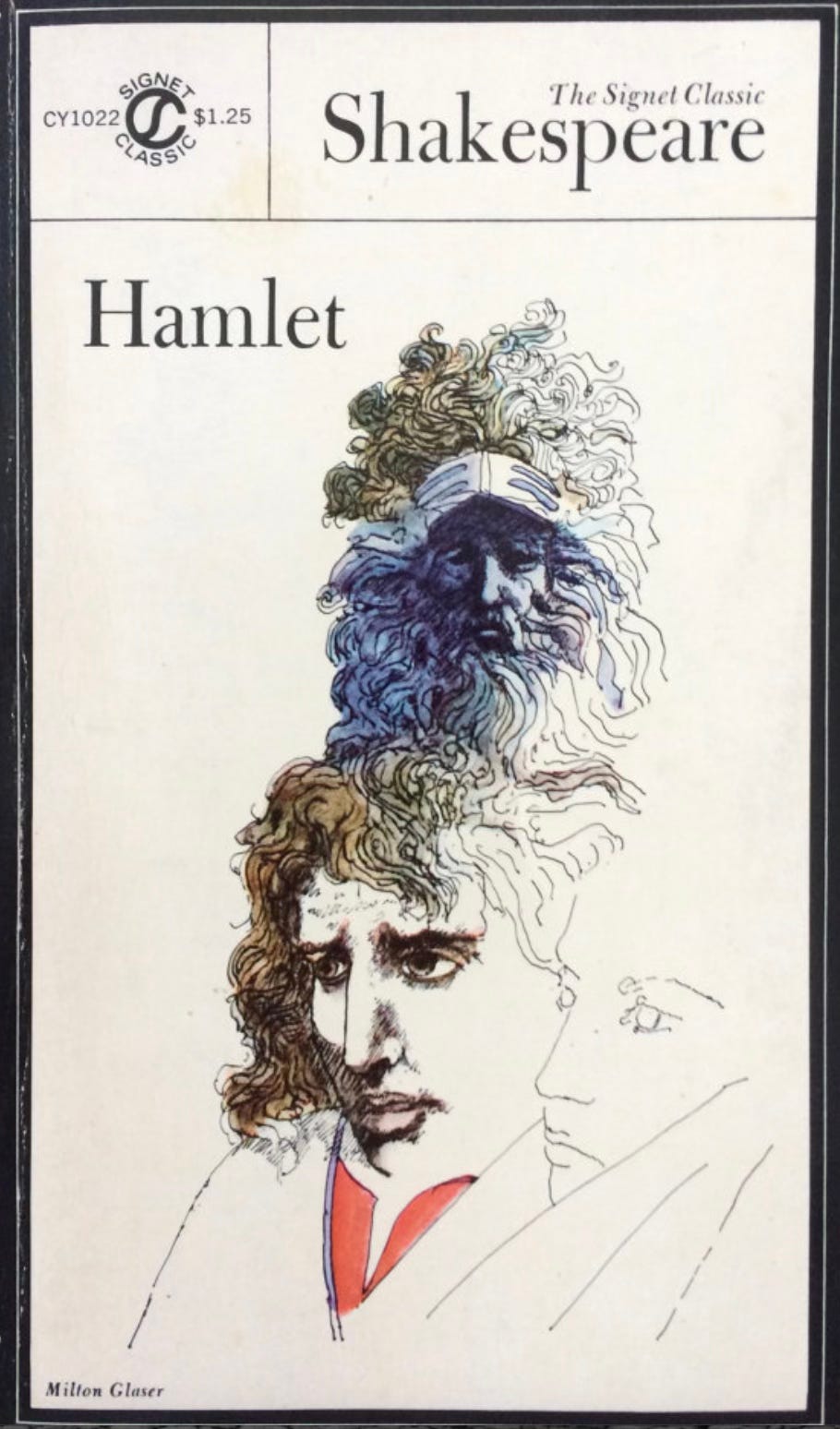
I wanted to make a larger image of just Ophelia - which measured about 2 1/2 inches by 3 inches on the book cover. I used the method of “gridding.” For those unfamiliar with this technique, let me describe it. I penciled over the drawing with a grid of one-eighth inch squares. Each row of squares was assigned a letter; each column a number. On a larger piece of drawing paper, I duplicated the grid, but now the squares were 1 inch in size. Transferring the image from the book cover to the new page was a matter of copying the line shape in any given square of the small grid to its corresponding square on the large grid. I made edits and refinements in pencil. Then traced over in a fine ink pen. At that time I was using a Koh-I-Noor Rapidograph.
I also drew and colored a version of Hamlet using this technique. My magnum opus of my early “Copy-Others-Artists’-Work” period was a poster of Glaser’s cover of King Lear. I would like to think the work still graces the home of my dear friend for whom I drew it forty years ago.
Time passed and I was drawn (ha!) back to Steinberg; specifically his cats.
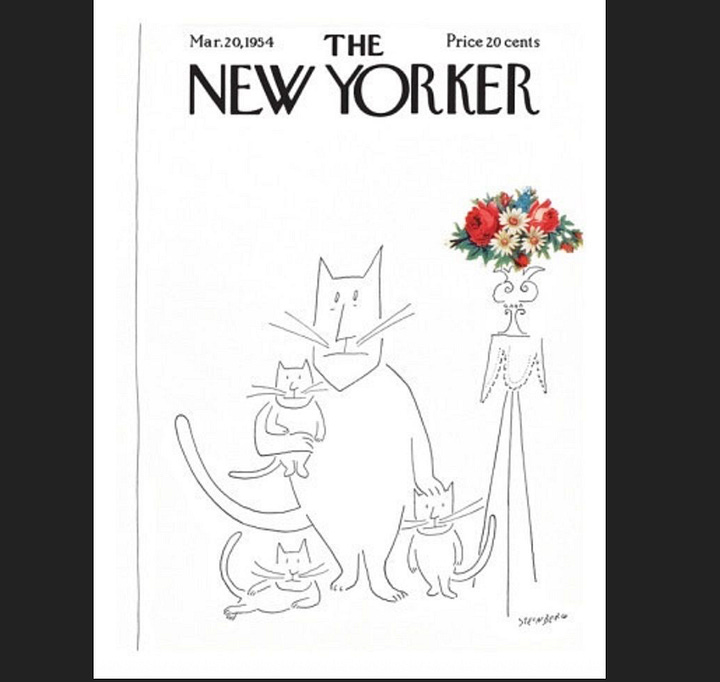
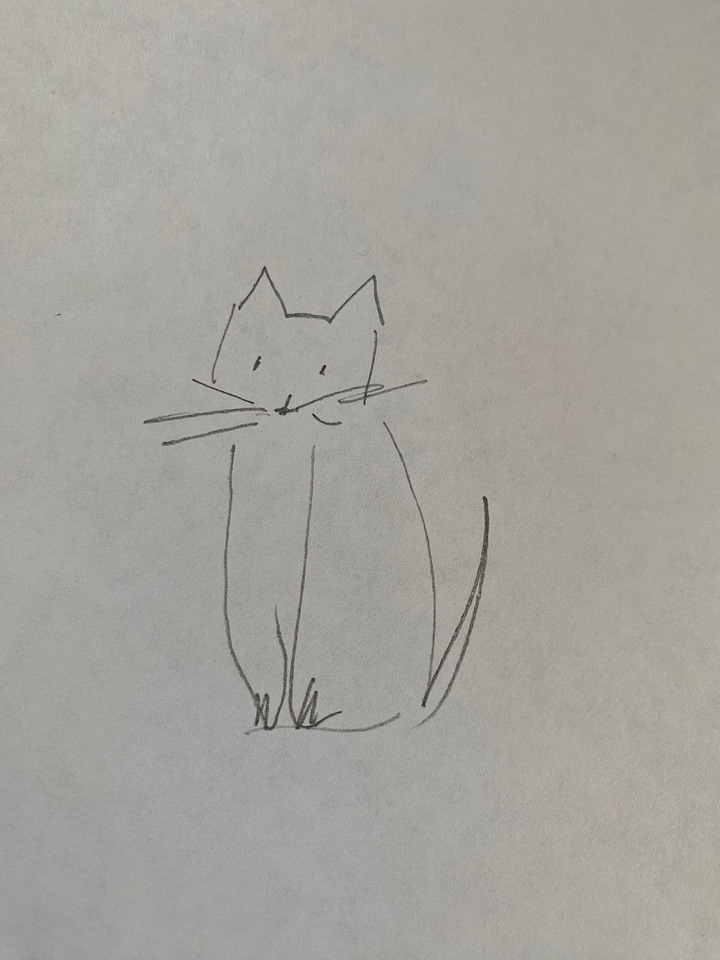
An itinerate doodler, I found myself looking for opportunities to draw cats — sitting on columns for birthday cards, perched on stones on a chalkboard in an empty classroom at the University of Chicago, and flying here and there in a landscape.
Is this all a form of lazy man art? I was going to use the phrase “Imitation is the sincerest form of flattery” as a way of legitimizing my efforts here. Apparently this idiom is derived from a phrase by Charles Caleb Colton, a 19th-century English writer and clergyman in his 1820 publication Lacon: Or Many Things in Few Words. This is the original phrase:
Imitation is the sincerest of flattery.
In researching the origin of this idea, I came across sobering antonyms which a desire for balanced reporting bids me list here:
Imitation is the lowest form of creativity.
Imitation is the cheapest form of praise.
Imitation is theft.
To imitate is to degrade.
The best counter is often mis-attributed to Oscar Wilde:
Imitation is the sincerest form of flattery mediocrity can pay to genius.
Ouch. But, you know, it rings true. But if I can brighten up a greeting card or chalkboard with mediocre Steinberg cats, so be it.
The following is a short gallery of works where I used the grid technique to enlarge a small drawing. Bear in mind that many of his original drawings had no title.
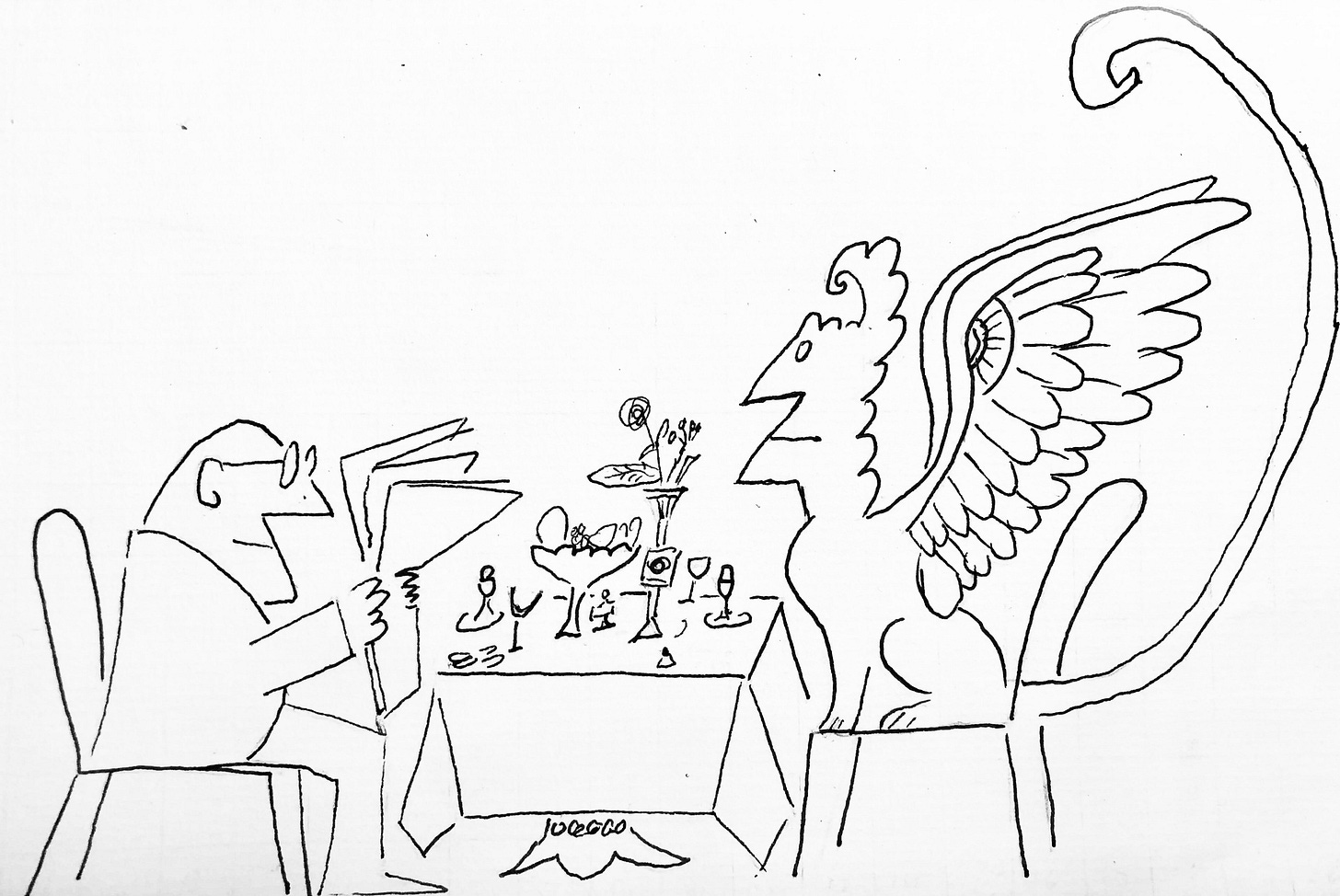
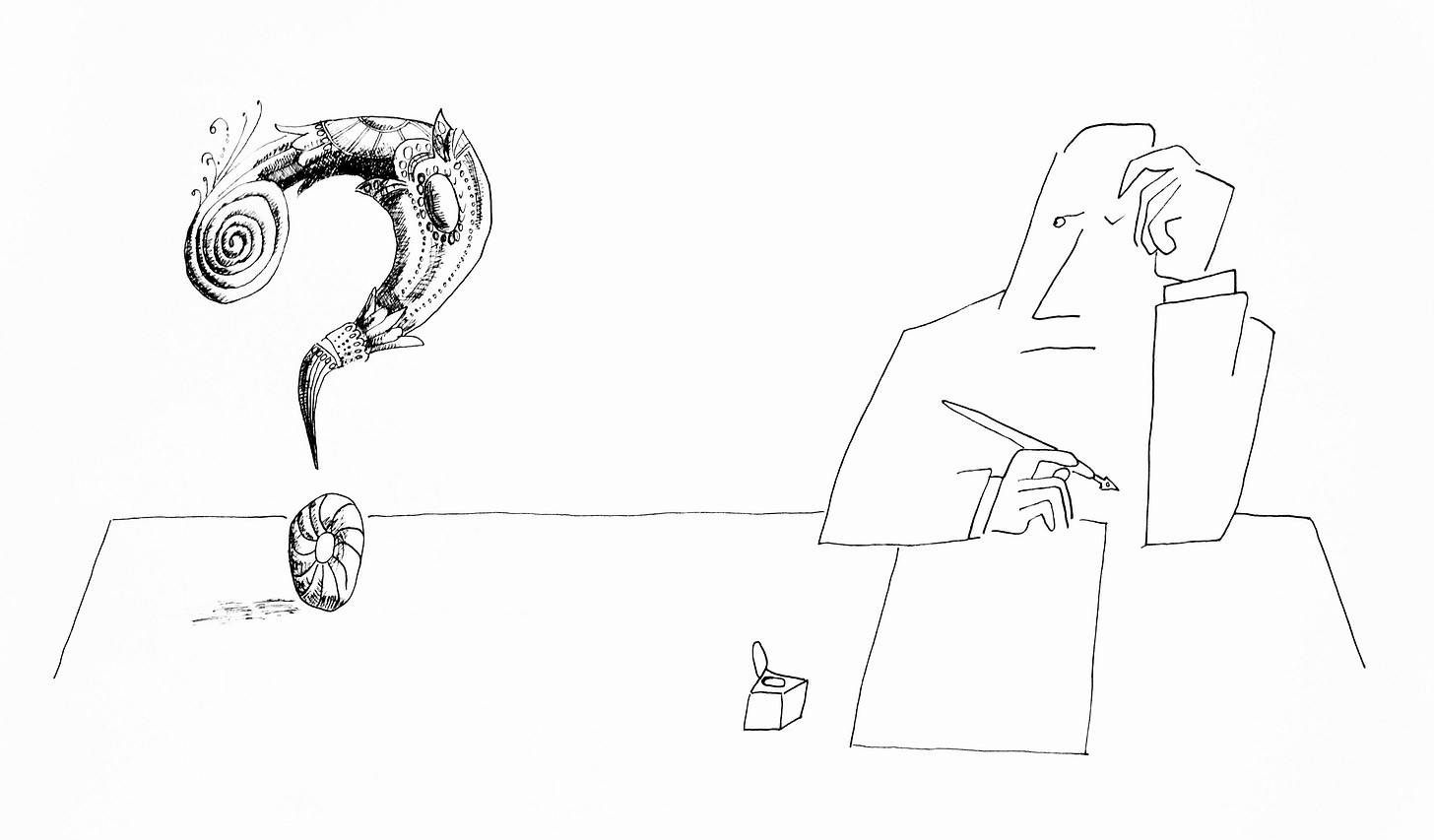
In a world where anyone can easily and quickly digitize, edit, enlarge and send anything to everyone all the time, why laboriously re-draw something by hand to give to one person?
Call it a pursuit of elusive beauty, one mediocre facsimile at a time.



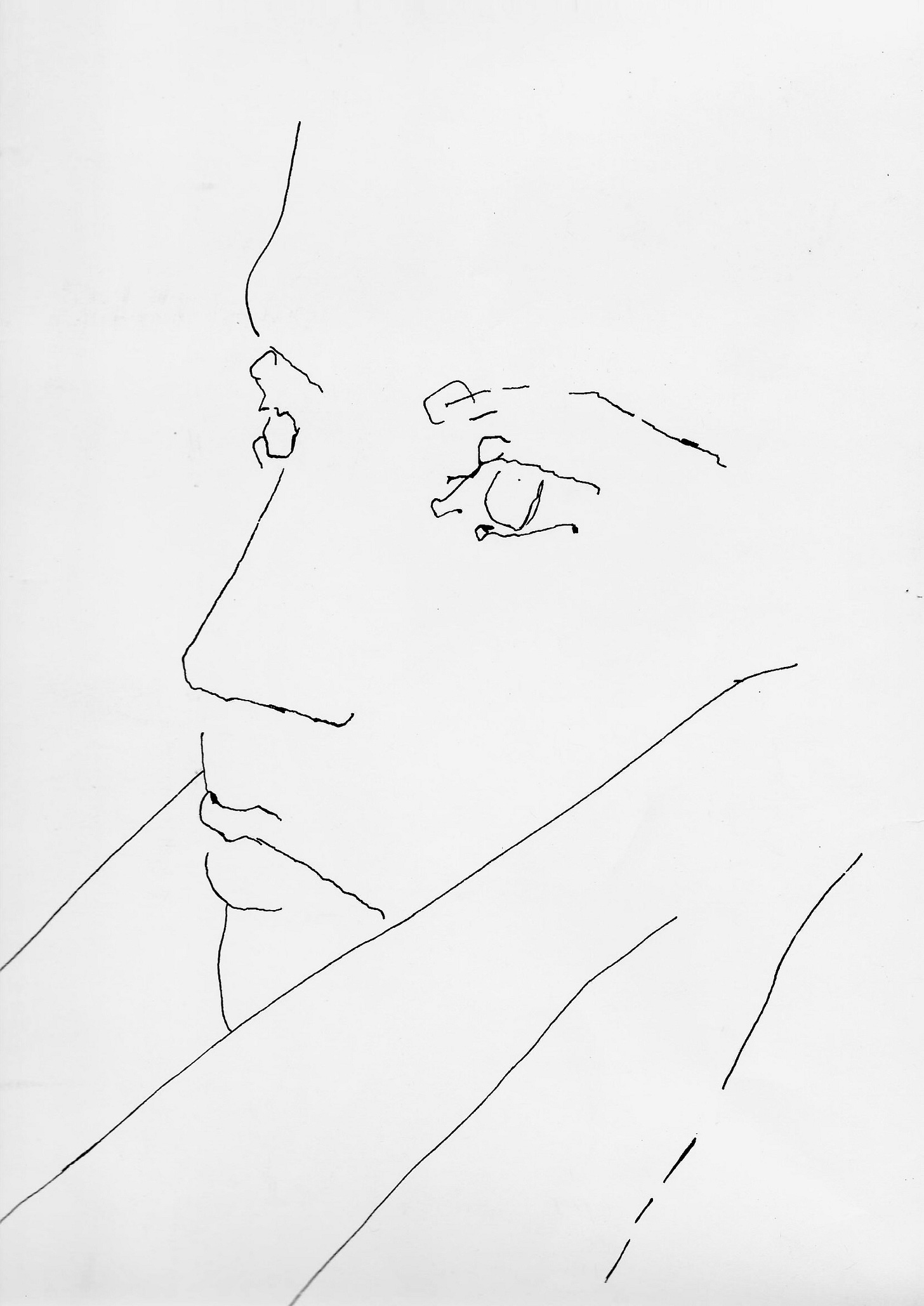
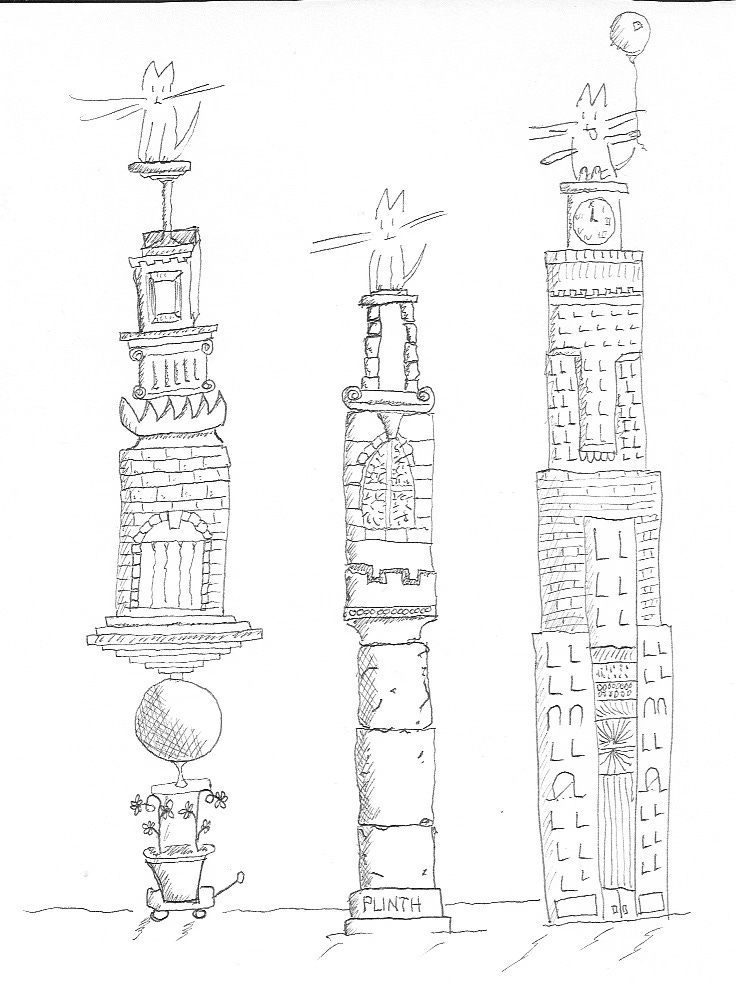


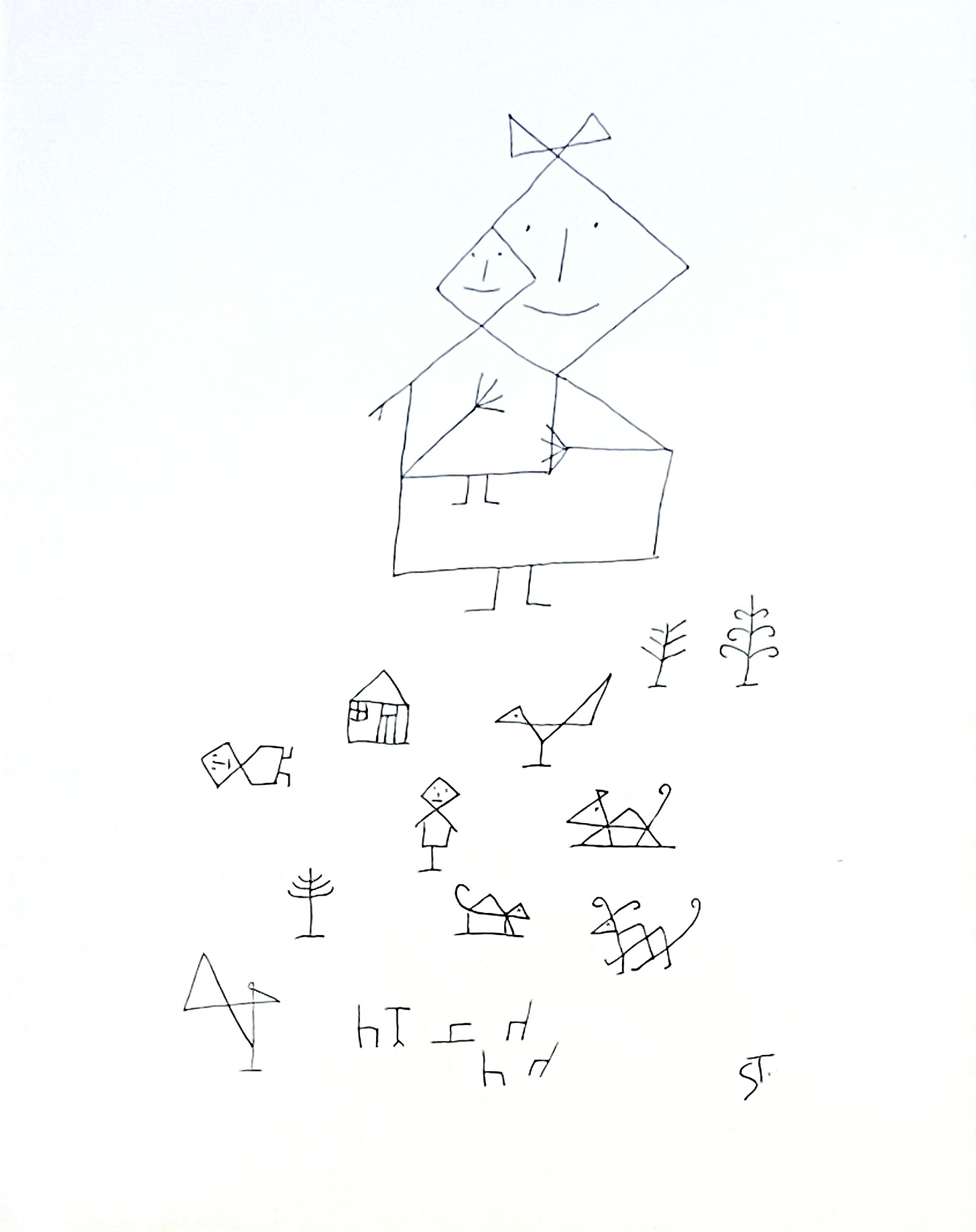

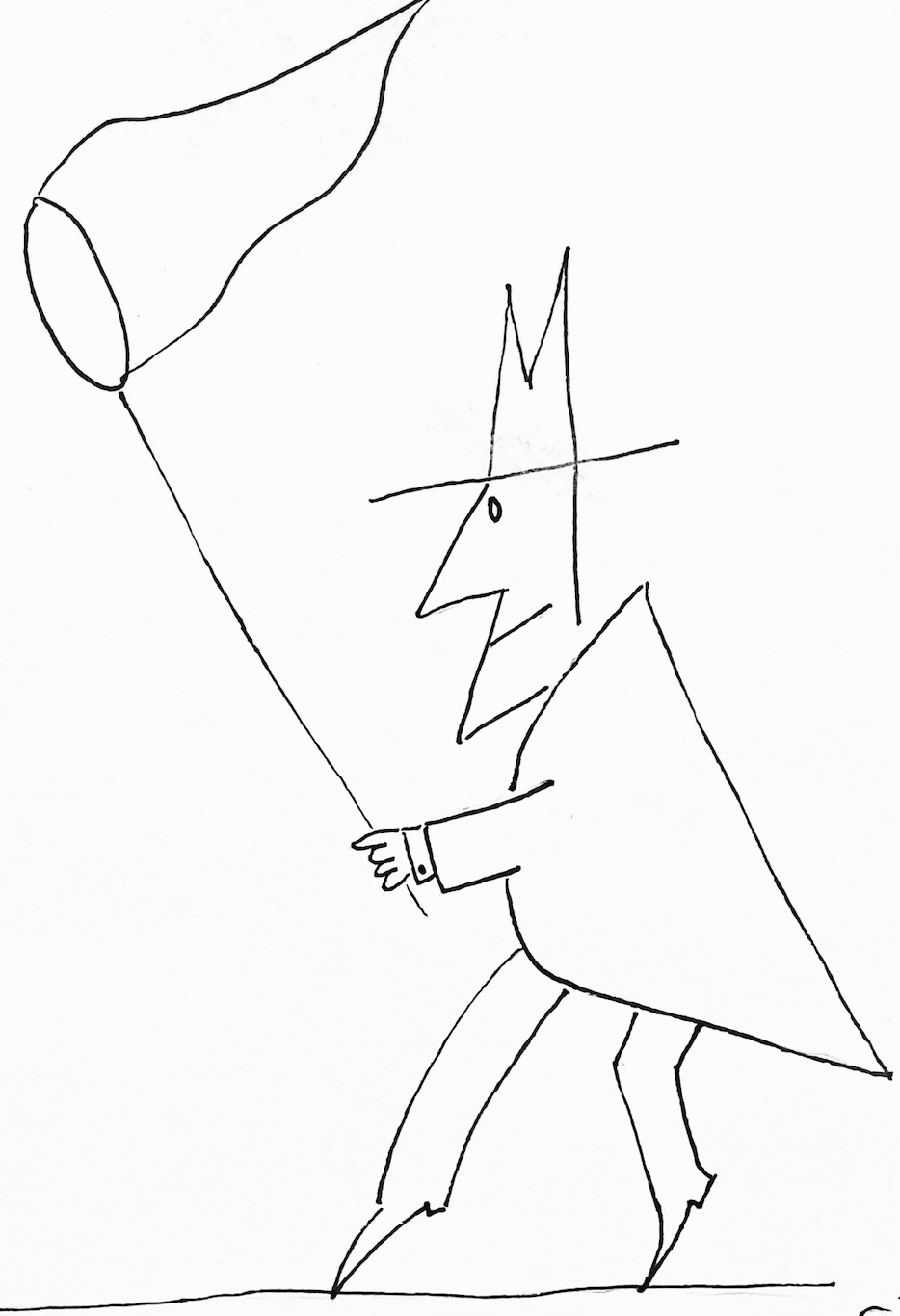
LOVE these. And two of my favorite artists, Glaser and Steinberg. I knew Milton a little for a short time, he lived in Woodstock and used to shop in the bookstore where I worked, and he'd come in to shop. A very dear man. xo
How delightful! I've not heard the Oscar Wilde misattribution. Do we have any idea who actually came up with that one? I've wondered, at times, is almost everything isn't just a reimagining of someone else's idea. There's an OG out there somewhere, though, right?
Your cats on columns are really special, Stew. I'd even think you could claim those as your own. But far be it from me to lead you down a degenerative path. 🤪